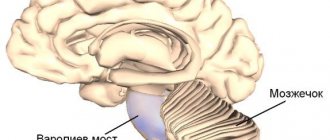This is a condition that some people may experience for several months after a stressful event or life shock. Adjustment disorder can cause a range of symptoms such as depression, anxiety and emotion disturbance. Additionally, some people call adjustment disorder situational depression. However, it is not the same.
In this article, we will look at the causes and symptoms, as well as diagnostic and treatment options.
What is this?
Adjustment disorder is an extreme emotional or behavioral reaction within 3 months of a stressful or life-changing event. People may experience an abnormal reaction or a higher level of emotional distress than expected in response to a particular situation. This stress can cause a range of symptoms that can affect people mentally and physically.
Symptoms of adjustment disorder are not associated with any other mental illness, the normal course of grief, or the acceptance of dramatic life changes. Even positive events can have a serious impact on the psyche if they represent significant changes.
Examples of life situations that cause adjustment disorder:
- divorce or separation
- loss of a loved one
- birth of a child or sibling
- serious illness or serious injury
- moving to a new school
- family problems
- retirement
- financial difficulties
- job loss
- natural disaster or other traumatic event
Some factors only increase discomfort. Genetics, life experiences, personality and existing mental health problems can all play a role in how people react to life circumstances.
1 People experiencing constant stress are at risk.
2 Children with constant psychological pressure are more likely to develop adaptation disorder.
3 Men and women are equally susceptible to it.
Symptoms begin within 3 months of the stressful event and last no more than 6 months, although psychology has seen longer periods.
Labor adaptation
Adaptation of personnel in the work team plays a fairly important role. This is the process of familiarizing the employee not only with the labor code and its responsibilities, but also with the atmosphere in the workplace. The speed of adaptation to a new place of work can be used to assess not only professional skills, but also the psychological characteristics of the employee.
Personnel adaptation varies and depends on the desire of the new employee to “join” the team. The following types are distinguished:
- Social adaptation, during which a new employee joins the team and accepts the rules and value systems established in it;
- Industrial adaptation is the process of a person’s adaptation to new working conditions;
- During professional adaptation, the employee acquires new skills, knowledge, and masters new skills;
- Psychophysiological adaptation involves getting used to new mental stress and work schedule;
- Getting used to new types of management and employer is called organizational adaptation.
Personnel adaptation as a process of assimilation takes place in several stages. First, the employee gets to know the team, learns the goals and tasks assigned to him, and “takes a closer look” at the microclimate in the team. During this introductory period the final choice takes place. The probationary period, which many employers offer, is also necessary for the employee himself.
Final adaptation of personnel can take quite a long time: up to one year. This period can be reduced if the rest of the team and the boss himself contribute to this.
During the period of final assimilation, the employee already fully copes with his job responsibilities and firmly takes his place in the social unit.
Symptoms of adjustment disorder
Include:
- depressed mood
- frequent worry or worry
- tearfulness
- hopelessness
- nervousness and excitement
- reckless behavior or violation of social rules
- social isolation
- suicidal thoughts
- difficulty staying in school, college or work
Some people only have emotional symptoms, while others may only have behavioral symptoms.
Suicide Prevention
If you know someone who is capable of self-harm or suicide or harming another person, ask them the difficult question: “Are you willing to commit suicide?” Listen to the person without judgment. Call a helpline or emergency number. Stay with him until professional help arrives. Try to remove any weapons, medications or other potentially dangerous items.
How is adaptive intelligence different from other types of intelligence?
“We make better decisions when we engage our heart, creativity and analysis, and ultimately our courage and motivation.
I call it the Adaptive Intelligence Pathway (AIP),” explains Gary Coulton, CEO and founder of the American company Adaptive Intelligence Consulting, about the concept of adaptive intelligence. He is one of the evangelists of the idea of adaptive intelligence. Briefly, the expert defines AIP as “the art and science of thinking,” pointing out that this concept combines several types of thinking. Gary Coulton is confident that a person combines emotional intelligence (EQ), mental intelligence (IQ) and positive intelligence (PQ). Mental intelligence is responsible for rational thinking, emotional intelligence allows you to recognize and manage your emotions, positive intelligence is responsible for a positive attitude and self-confidence. Adaptive intelligence combines the features of the first three concepts, using these skills to quickly and comfortably adapt to new conditions.
Adaptive intelligence allows you to make the right decisions instantly by combining the skills we develop through emotional, mental and positive intelligence.
“Our Purpose (EQ) is the foundation of Strategy (IQ) which drives Execution (PQ)”
Adaptive intelligence allows you not only to quickly adapt and act in unforeseen circumstances, but also to create changes yourself and launch processes that will lead to positive changes. This ability is primarily needed by managers. They constantly need to react to external circumstances, adjust plans, and develop new strategies. In unexpected situations, it is the leader who conveys the mood and guides the team.
CEO and founder of the American company Adaptive Intelligence Consulting Gary Coulton
“When we identify internal and external barriers, we can build our own development trajectory. Ask yourself, “Which of these barriers can I really influence and how can I do it?” Using AIP helps us not only recognize these barriers, but also develop an action plan to overcome them. The more of these barriers people, teams and organizations overcome, the more likely they are to achieve bold goals.”
Adaptive intelligence is a system that combines several types of thinking. Thanks to AI, a person reacts positively to changes, preserves values, thinks and communicates flexibly. Finding himself in new conditions, a person breaks away from previous experience; old schemes no longer work. He needs to immediately build new ones. This is only possible by being emotionally stable.
Venture investor Natalie Fratto believes adaptability is a key skill for a modern person. In her opinion, craving for the past, conservatism and adherence to past patterns do not allow us to develop. To determine whether a person has developed adaptive intelligence, Fratto says, you need to ask the question “What if?” “What if your main source of income disappeared overnight?” asks the speaker. In her opinion, this question provokes a person to create several images of the future at once, and also makes him think about the actions that he will take. “Rather than testing how you take in information, adaptive intelligence looks at how you manipulate that information to achieve a goal,” says Fratto. She is sure that adaptability is not a unique property of several people that is given at birth, it can be constantly developed.
Natalie Fratto, TEDx talk “3 ways to measure your adaptability”
“There is a kind of natural tension between exploration and exploitation. And in fact, many of you tend to overestimate exploitation. In 2000, a man in an interview suggested to John Antioco (former CEO of Blockbuster Video) that he should start an online film business. However, John laughed and replied: “I have thousands of customers and hundreds of stores, I have to focus on the money.” The young man at the interview turned out to be Reed Hastings, director of Netflix. John was focused on running a successful business model and failed to see what was around the corner.”
Types of adjustment disorder
There are 6 different types of adjustment disorders, which doctors diagnose based on the presence of symptoms:
1 With anxiety: feeling nervous, restless, or separation anxiety.
2 With a depressed mood: hopelessness, hopelessness, or frequent tears.
3 With anxiety and depressed mood: a combination of the above symptoms.
4 With a violation of behavior: violation of the rights of others, social norms and rules.
5 With disturbances of emotions and behavior: a combination of all of the above types of adaptation disorder.
6 Uncertain: symptoms that do not fit into any of the above categories.
Symptoms in children
Symptoms of adjustment disorder may vary depending on the person's age. Children and adolescents have more behavioral symptoms, such as disruptive behavior. Adults experience more severe depressive states.
Children experience:
- sleep problems
- cries often
- avoids or does not want to go to school
- isolates himself from friends and family
- starts fights
- irritability
- vandalism
- hostility
- depression and anxiety
Responsive Vs adaptive design: which is better for the user?
Modern web developers and marketers are increasingly giving preference to responsive design, which allows them to create a page that can be viewed on any device. And although this approach is quite good from the point of view of Google, which “loves” responsive sites, it is far from the only option that can adapt to the needs of the user.
The so-called adaptive design did not appear yesterday, but people started talking about it seriously only recently, thanks to the improvements that it can bring to the user experience.
To understand which of the two types of design is best for you, you need to clearly understand the advantages and disadvantages of both methods, as well as know what the most optimal solutions exist for different types of sites and devices.
- Creating a responsive environment to improve user experience
Responsive Web Design
Responsive web design is scaling the interface to fit the user’s device using media-queries, or a CSS3 module that allows you to set different styles (or even style sheets) depending on the screen resolution, its size and other characteristics.
The use of this method is better suited for sites with a flexible, or “rubber” structure. Otherwise, developers will spend a lot of time and resources redesigning the site for tablets and mobile phones to compensate for the existing lack of flexibility.
Besides its changing structure, responsive design has several other advantages:
1. The same appearance of the resource in different browsers and on different platforms 2. The site has the same URL, which contributes to SEO optimization 3. Developers only need to maintain one site, which reduces the time spent on design and content
And while the positive aspects of responsive design are obvious, there are a number of disadvantages to this method. The biggest of these is loading speed, which is significantly reduced by high-resolution images and other visual elements needed to create a resource's appearance.
If you opt for a responsive approach, your designers will always be limited by this factor, as complex visual elements can slow down loading on mobile devices.
- Optimizing the design of mobile devices: tablets vs smartphones
Responsive web design
Responsive design works a little differently. It segments users into categories based on the device they are viewing the site from.
While sites created using responsive design technology look the same regardless of device size, a responsive resource detects which device the user is accessing the site from and displays the version that was designed specifically for that type of device.
For example, if you view a regular blog page that contains images, titles, descriptions, and a share button on a mobile phone, the page will take a very long time to load due to the large number of images. In addition, due to the small screen sizes, the page will look overloaded.
Instead of showing a smaller copy of the resource, a responsive site server identifies the user's device type and displays a simplified version of the blog, containing only the most necessary interface elements and lower-quality images.
In other words, the server does all the heavy lifting instead of forcing the site to optimize itself. Among the advantages of adaptive design are the following:
- Images load much faster as they are compressed and adapted to the user's device
- The site loads faster because the server determines the user’s device type and loads the corresponding program code
- Developers enjoy creative freedom as they can create different versions of sites and customize them to suit different device types to make them more convenient for mobile users.
The appeal of this method is overshadowed by the fact that creating a responsive website is not so easy. Due to the adaptation of the design to different devices, the time spent on development increases significantly. Moreover, if you need to make any modifications to the site, you will have to make changes to all its versions. Therefore, if you have a small budget and do not have a team of specialists who will support a responsive website, it is better to abandon this idea for now.
- Why should you forget about responsive design?
Which option is suitable for what?
Even if you prefer one of the two types of design described, it is important to realize that you need to think about the user experience first and foremost.
If it is more convenient for your users to interact with a resource that has the same structure on all devices, then opt for responsive design. If your users are more tech-savvy and you want to lay a good foundation for the future, then responsive design will be the optimal solution.
Despite the fact that developing a responsive website is more difficult, its advanced features and fast loading speed can have a positive impact on conversion, which is especially important in the e-commerce and media industries.
For simple landing pages or sites that load perfectly on mobile devices, responsive design will be the optimal solution. Their owners should consider creating an adaptive resource as an option for the future.
High conversions to you!
Based on impactbnd.comimage source rmaxwell
21-10-2015
Differences from PTSD
People with adjustment disorder may have a cluster of symptoms that overlap with those of other conditions.
These include:
- post-traumatic stress disorder (PTSD)
- depression
- anxiety
People similarly experience depressed mood and anxiety. However, adjustment disorder has a different set of criteria than other mental health conditions, allowing doctors to differentiate between them.
PTSD usually occurs after a life-threatening event, such as war or physical attack, as opposed to adjustment disorder, which is caused by major life changes or severe stress. PTSD often lasts longer than adjustment disorder and is more complicated if the person has experienced prolonged or repeated trauma rather than a single event.
Adjustment disorder is difficult to distinguish from depressive disorders. Doctors can use a tool called the Diagnostic and Statistical Manual of Mental Disorders, which lists the main criteria. Adjustment disorder is also listed in the International Medical Classification and is known as ICD-10.
Diagnosis
The doctor will evaluate the person, ask about their medical history, and conduct a psychiatric examination to make an accurate diagnosis. This examination helps rule out any other possible mental disorders.
The doctor will ask the patient about any recent events that might have caused the adjustment disorder. It will also look at the person's personal history of emotional and behavioral patterns. In children, your doctor will check your development as this can affect emotional and behavioral responses. In some cases, blood and urine tests are prescribed to make sure there is no other disease.
Treatment of adjustment disorder
Psychotherapy, or talk therapy, can help people overcome unpleasant conditions. The patient can meet one-on-one with a therapist to work through emotional and mental issues. Others may find group therapy helpful for developing social and interpersonal skills.
One approach involves cognitive behavioral therapy (CBT). This technique focuses on changing mindsets to help people solve problems and develop a positive attitude.
Children or family members with adjustment disorder may benefit from family therapy and will work with a therapist to improve communication, interaction, and support. In some cases, your doctor may prescribe medication along with psychotherapy for symptoms such as depression and anxiety. However, it is not usually the first line of treatment for adjustment disorders.
Summary
Adjustment disorder is an extreme reaction to a stressful life event or significant change. People of any age are susceptible to it. Changes in family structure, divorce, or moving can all cause adjustment disorder.
People may feel depressed, anxious or hopeless, often become withdrawn, become more tearful than usual, or have trouble sleeping. Children and adolescents may exhibit disruptive behavior.
Patients may want to see a doctor if they experience symptoms of adjustment disorder. The doctor may refer them to a mental health professional, such as a therapist. Talk therapy, family support and care greatly alleviate the condition of the victim.
Behavioral Psychology: How Psychological Attitudes Affect People's Attitudes, Opinions, and Beliefs
Each person perceives and experiences external and internal processes in his own way. The same stimulus or situation affects different people differently . This approach provides the simplest and clearest answer to the question of how people's views, opinions and beliefs are formed and changed.
Each person in his own way, individually perceives and experiences both external and internal processes. Different people have different needs. Therefore, their settings are also different. Therefore, the same stimulus or situation affects different people differently.
This is most clearly seen in the example of commercial advertising.
According to experts in the field of mass communications, its effectiveness is considered high and even very high if it reaches from 1 to 10% of the target audience (Harris R., 2001). All this means that information that has an impact on some people has no effect on others.
In other words, people have attitudes that express their needs and contribute to the satisfaction of these needs. New needs lead to the formation of new attitudes; changing needs lead to changes in attitudes.
All installation functions can be grouped into types or blocks.
This classification was first carried out by D. Katz (1967), identifying five main functions of installations:
Self-defense function. Value-expressive function (self-representation). Social-regulatory function. Instrumental (utilitarian) function. Cognitive function.
Protection function I
For the first time in the history of psychology, the theory of psychoanalysis spoke about the mechanisms of ego defense. Sigmund Freud himself, and especially his daughter Anna Freud, identified and described quite a few types of psychological defenses (Freud A., 1999). Among them are the following: neurosis, rationalization, projection, denial, formation of the opposite reaction, etc.
The most typical example of a defense mechanism for the Self is rationalization: a person, prompted by some irrational, unconscious impulse, commits an act, but finds a completely rational explanation for it.
As a rule, the irrational impulse that motivates a person to perform certain actions comes from negative drives and feelings of a person - envy, anger, hatred, feelings of inferiority, worthlessness, etc. But in the self-attribution of an individual, the motivation for his actions acquires a noble , even more - sublime meaning. The person himself explains his actions solely with good intentions: he did so in the name of goodness, justice, and better considerations.
In those cases when a person’s self-awareness is developed to a certain extent and is periodically activated, he constantly resorts to ego-defense mechanisms to regulate self-esteem. At the same time, people follow the path of searching for the simplest ways to solve their problems. The easiest way to raise self-esteem is by humiliating and belittling other people - individuals or even entire social groups.
The need to increase self-esteem, thus, leads to the formation of corresponding attitudes - xenophobia, racism, sexism, nationalism, class hatred, etc. Fear, envy, a sense of one’s insignificance give rise to an attitude of striving for power, wealth, give rise to arrogance, disdain , swagger (for example, superior, national, social, etc.)
As a rule, people use not one, but many ego defense mechanisms at once. Rationalization goes side by side with projection (it’s not me, it’s him, the first). Projection is accompanied by denial.
Thus, some people may constantly feel the need to protect the Self and have corresponding attitudes; for others, a state of increased anxiety and low self-esteem may be temporary. Still others may only occasionally experience the need for ego protection. and then their attitudes that contribute to its satisfaction may also be short-lived.
Value-expressive function of attitude
Attitudes that express a person’s values usually satisfy his need for self-representation. Simply put, through these attitudes a person makes himself known to his social environment. It is clear that you can only express what you have, what you yourself are. Therefore, both the type and level of a person’s values are determined by the level of his personal development and the complexity of his self-concept.
More on the blog: Happiness does not depend on conditions?
Image and style of life, manner of dressing, type of hairstyle, possession of certain things, expressed opinions, views, judgments, behavior - with all this a person expresses his Self. So, say, creating the image of a rich, successful person can be associated with an orientation towards enrichment and, accordingly, express the basic value of the individual.
In another case, it may be the creation of a sexually attractive image, which may also be a reflection of attitudes and values. But, of course, an individual can represent himself in other ways. He can, for example, actively express his public position, participate in some civil movements, support certain political parties. From the perspective of a functional approach, we can say that as many people as there are, so many needs.
Social-regulatory function of attitude
When interacting with other people, we, voluntarily or involuntarily, form our own ideas about them, in other words, we form attitudes towards them. We like some people, we don't like others.
It is important to note how our attitudes towards others help or hinder our social relationships. It is clear that if a person has a general negative attitude towards people, then his interactions with others will be minimized. And even those will begin to differ in tension.
But the fact of the matter is that people do not always declare their real attitudes towards their acquaintances, relatives, neighbors, co-workers, etc. Much more often, in relationships with their immediate circle, people use politeness, good manners, flattery, that is demonstrate certain generally accepted patterns of behavior.
But in almost any case (with rare exceptions) if a person wants to achieve favor, sympathy, affection from others, he demonstrates his agreement with them, commonality of views, opinions, etc. The similarity factor in most cases enhances social attractiveness.
Of course, the similarity of views and attitudes between people can be real, and not just manifest. Therefore, to establish social relationships, we are looking for like-minded people, people similar to us - in age, gender, social group, based on the fact that they have the same attitudes as us.
Instrumental (adaptive, utilitarian) function
The very name of the function indicates the aspect of behavior that learning theories consider, and specifically the principle of instrumental learning. In the broadest sense, its essence boils down to the fact that a person learns to achieve desired results (reward) and avoid undesirable ones (punishment).
Accordingly, people develop positive attitudes towards those objects that can help satisfy their needs, desires, drives, and negative attitudes towards objects that interfere with the achievement of what they want, causing frustration, as well as other undesirable consequences.
In this regard, the instrumental function is capable of overlapping or absorbing all other functions: ego-protective, value-expressive, regulatory and cognitive function. A person can win sympathy, admiration, friendship, favor, simply by expressing his views, opinions, value priorities, in a word, through the expression of his Self.
In the same way, he can avoid the manifestation of anger, aggression, and other negative feelings towards himself, using ego defense mechanisms, for example, repression, suppression, etc.
Function of cognition
In addition to other extremely necessary functions, attitudes play an extremely important role in people’s lives in structuring and organizing knowledge about the world around them and about themselves. With their help, we categorize and build our knowledge into a more or less coherent, logically linked system.
This does not mean that the world around us and ourselves are exactly as they are represented in our attitudes. The role of attitudes is not to search for truth, but to organize the picture of the world in our minds.
Without ready-made cognitive schemes, including attitudes, we would hardly be able to live at all, since everything that happens would seem to us to be complete chaos.
Attitudes thus help us organize the world using the principle of economy of thought and avoiding the dangers of information overload. Borrowing other people's experience, opinions, views, attitudes creates big social problems, but an attempt to refuse borrowing in order to create your own and only your own position is unrealistic. The unifying basis of all attitudes of any particular individual are the basic values that he professes or adheres to.
More on the blog: How simple moments become very pleasant
To explain the reason for the emergence of pluralism and conflict of values in the attitudinal position of individuals, Anthony Pratkanis and Anthony Greenwald (1989) introduce the concepts of unipolar and bipolar attitudes. They believe that the ambiguity of an attitude towards a problem is explained by the fact that a person can consciously avoid one-sided information about it, trying to get acquainted with different and even contradictory information.
Monopolar attitudes are formed under the influence of information that uniquely evaluates the object of the attitude. If, say, your knowledge of a person is limited to the fact that he is smiling and polite, then, of course, you will insist that he is very sincere and nice.
The vast majority of people's attitudes are still monopolar. Having an already established attitude towards a certain object, people most often interpret new information about it in such a way that it is consistent with their existing ideas. Not to mention the fact that they may not even notice, perceive, or hear information that contradicts their views.
People are not only more willing, but also better at remembering information that confirms their views. D. Roberts and Nathan MacCoby (1985), who established this fact, believe that a person experiences pleasure when receiving confirmation of the correctness of his attitudes. After all, it increases his self-esteem.
Therefore, we make friends with those who like us, just as we like ourselves, we listen to the radio and watch television programs that confirm our attitudes, we read books, newspapers and magazines that are consistent with our views on reality. All this can be briefly defined as selectivity in the approach to information.
Paul Sweeney and Kathy Gruber demonstrated this bias in the 1972 Watergate scandal. It arose due to the fact that the election team of Richard Nixon, who won the election and became President of the United States, resorted to technical eavesdropping in the headquarters of Nixon's rival McGovern during the election campaign.
So, supporters of the victorious Nixon and the lost election of McGovern, as it turned out, were not equally interested in the scandal that broke out: Senate hearings, media reports, etc. If McGovern's supporters were interested in any information related to Watergate, then Nixon's supporters demonstrated a clear lack of interest in this matter (Zimbardo F., Leippe M., 2000).
Attitudes largely predetermine not only our vision of the world, but also our mood, vitality, and general psychological state. If the world seems dangerous and threatening to a person, then, of course, he will experience a constant feeling of anxiety and uncertainty. And vice versa: a radiant worldview will tune a person to lightness and carelessness. The optimal option, as always, lies between these two extremes.
***
As we see, certain functions of attitudes are predetermined by the personal characteristics of people. Therefore, before trying to change an individual’s attitude, it is necessary to know and take into account how it is characterized: is it determined by the person’s personal characteristics or by the subject and content itself?
Any attempt to change attitudes in large audiences, be it advertising or political propaganda, will be successful only with respect to some part of the people, but not with the entire audience. Moreover, here it is just as important to take into account and calculate the time of impact, since most people’s needs are temporary in nature and you can find yourself in an absurd position, trying to change those attitudes that no longer exist.
Functional theories thus explain the essence of two processes simultaneously—the formation and change of attitudes. Along with other theories, they give an idea of the role that attitudes play in the mental life of people and the impact they have on behavior.
Author: Nikolai Ivanovich Semechkin, Candidate of Philosophy, Head of the Department of Psychology, Far Eastern State University.
Source
Read our classified materials










